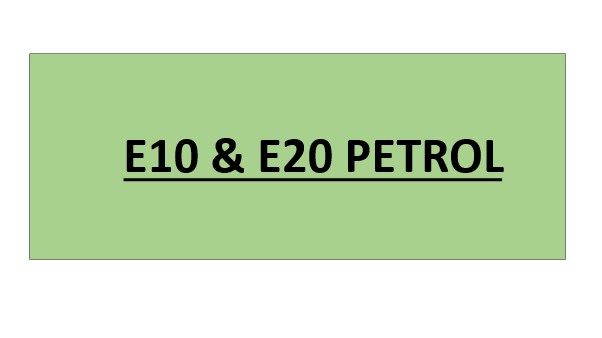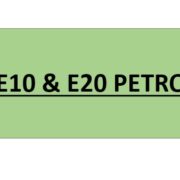E10 & E20 Petrol
E10 & E20 are basically petrol which is blended with ethanol wherein E10 has 10% blending of ethanol in petrol & 20% ethanol in E20 petrol.
Govt of India has set a target to reduce the consumption of petroleum products in the automobile & energy sectors. Govt want to reduce the import of petroleum products in order to reduce the dependency of fuel from other countries, protect the environment (due to the reduction in fossil fuel consumption) & to save foreign exchange.
The Hon’ble Prime Minister of India has released a “Roadmap for ethanol blending in India 20-25” in June 2021. Initially, Govt had notified a policy named “National Policy on Biofuels” in 2018 & set the target to blend 20% ethanol by 2030, but later on the target date was reduced to 2025-26. Also, an intermediate target to blend 10% ethanol in petrol was set-up for Nov-2022.
But India has achieved intermediate target well before timeline (five months ahead) of Nov,22 with the help of coordinated efforts of Public Sector Oil Marketing companies. Before, 2014, the ethanol blending was 1.5%.
What is Ethanol?
Ethanol is also known as Ethyl Alcohol (C2H5OH) or drinking alcohol or grain alcohol. It is a flammable, colourless & slightly toxic solution. It is sued for various purpose such as fuel, solvents, scents, flavourings etc. Commercially It is produced naturally as a byproduct of sugar manufacturing process. It is produced during the fermentation of sugars by yeasts or petrochemical processes like Ethelene hydration. But, these days ethanol can be produced from other sources also like food grains like bazra, maize, fruit & vegetable waste which helps farmers to earn extra income.
The cost of ethanol is very less as compared to petrol as it is a byproduct & plant-based source. Because of its fuel property, it can be made vehicle compliant & when it is mixed with petrol, it becomes ethanol blended petrol.
Advantage of Ethanol ( E10 & E20 Petrol)-
It is a biofuel which is echo-friendly, cheaper as compared with petrol and produces fewer carbon emissions that is why it is to be used with petrol to promote renewable & echo-friendly fuel to reduce the petroleum requirement of India.
What is EBP –
The full form of EBP is Ethanol Blending Programme & the aim of this program is to reduce the requirement of crude oil in terms of import, reduce carbon emissions & increase farmers’ earnings.
Effect of Ethanol on vehicle engine –
Ethanol in India is being used since 2003. Because of its fuel property, it is blended with petrol.
Initially, 5% ethanol was blended
by few states but after recognition from the Bureau of Indian Standards in 2006, some more states started using it. Govt came with a programme of ethanol blending in 2018 & all petroleum companies were allowed to blend ethanol with petrol as per policy.
Ethanol has a higher combustion rate than petrol & it contains less energy, therefore it may impact fuel efficiency. A 5% blend (E5) may not affect the engines, but more % of ethanol could be a problem. The increased amount of ethanol may damage some components such as rubber, plastic and aluminium. Also, it may affect the life cycle of some components like fuel pipes, injectors & hoses.
Ethanol with 10% (E10) in petrol could be managed by the engines but for 20% (E20), the car manufacturers will have to make changes in their engines & components. Therefore, Govt have asked car manufacturers to modify engines accordingly.

